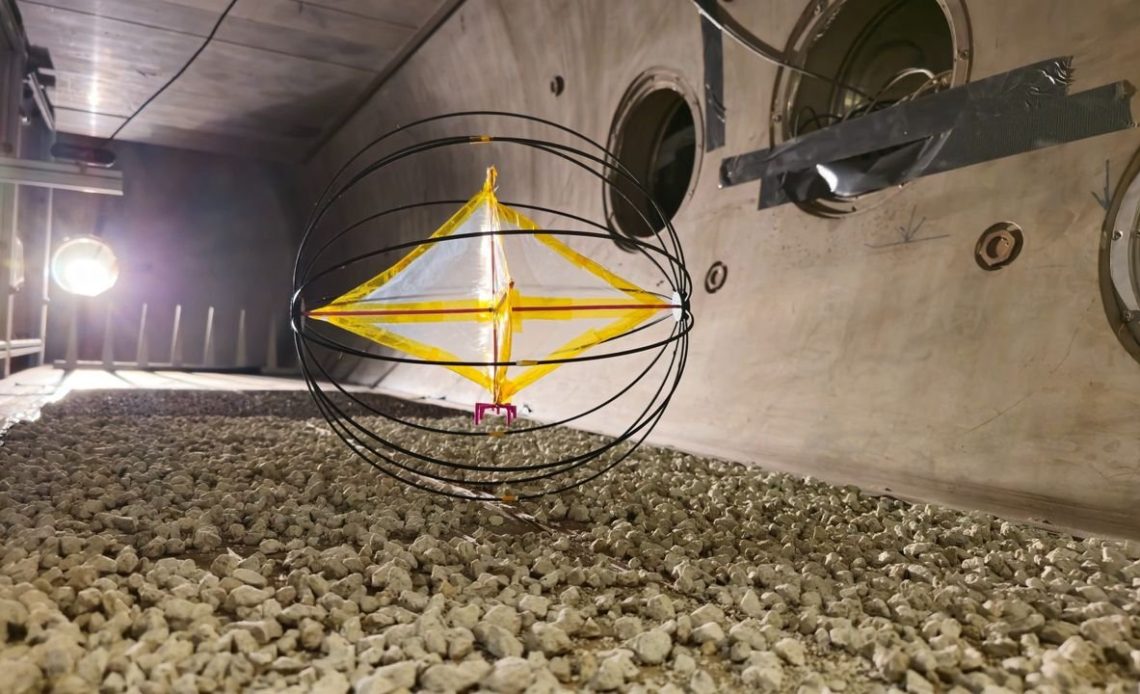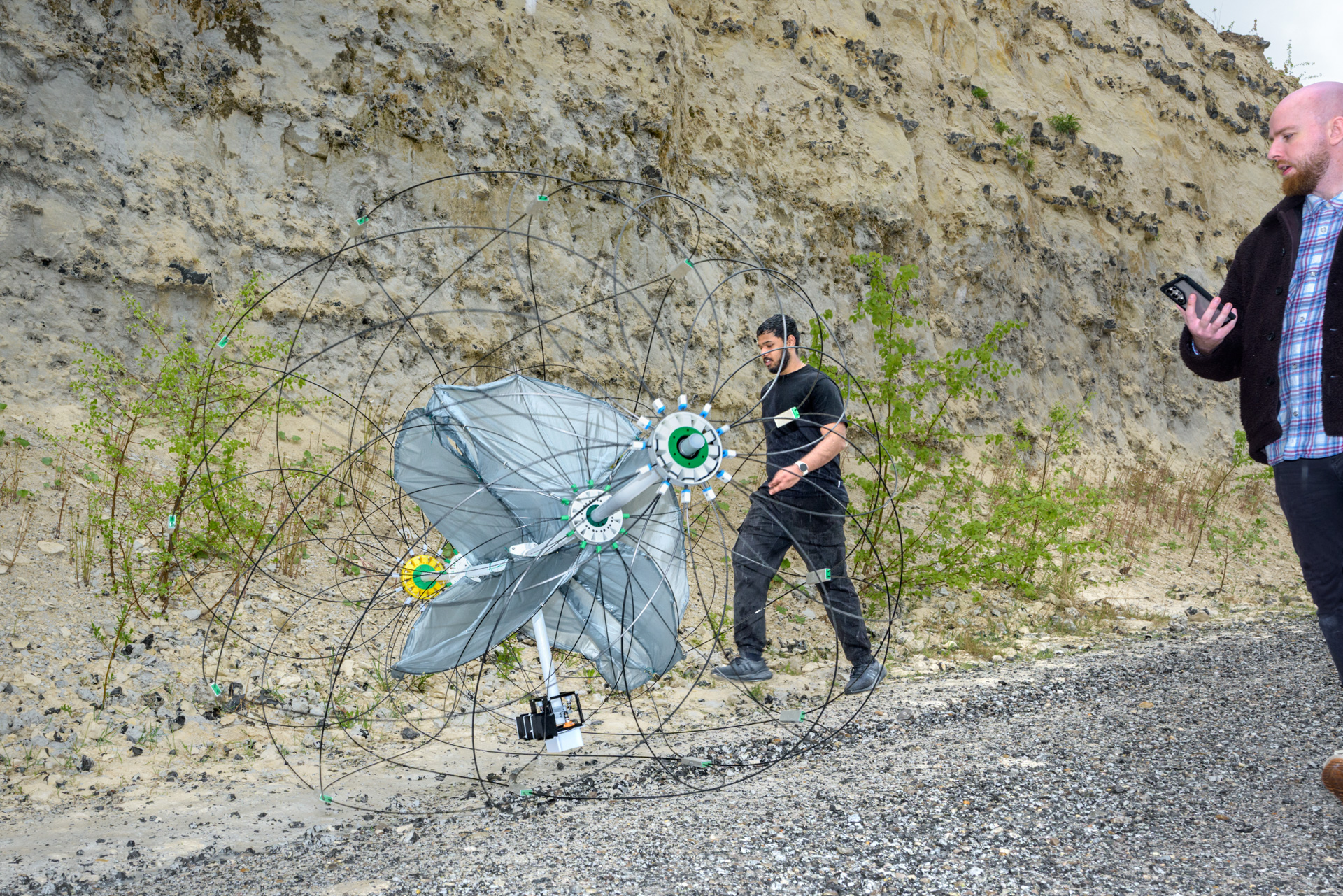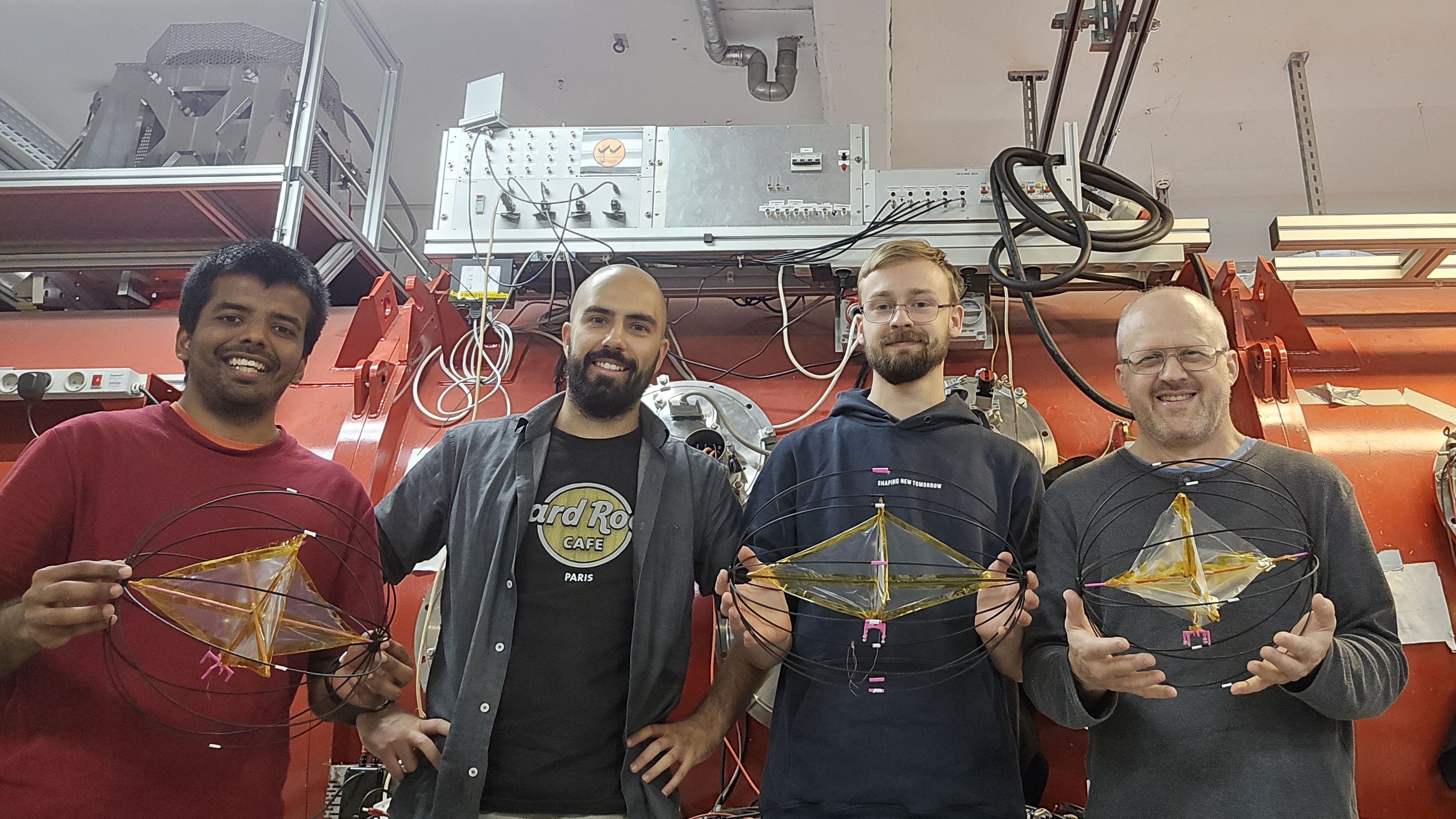
Wind speeds on Mars are high enough to blow fleets of large spherical rovers that resemble tumbleweed across the Red Planet’s surface, according to new wind-tunnel tests of small prototypes conducted by an international consortium of young scientists.
“We now have experimental validation that tumbleweed rovers could indeed operate and collect scientific data on Mars,” James Kingsnorth of the Delft University of Technology in the Netherlands and head of science at Team Tumbleweed said in a statement.
The idea behind the Tumbleweed project is to design large-scale, low-cost robotic rovers that can cover great swathes of the Martian surface while driven purely by the breeze.
Whereas the final planned tumbleweed rovers would be 16 feet (five meter) across, in April 2025, Team Tumbleweed tested a half-size prototype called the Tumbleweed Science Testbed in a disused quarry in the Netherlands. The team proved that even off-the-shelf instruments could collect environmental data while the rover tumbled roughly across the terrain.
Then, in July 2025, Team Tumbleweed headed to Aarhus University’s Planetary Environment Facility in Denmark to test small 11.8-, 15.7- and 19.7-inch (30-, 40- and 50-centimeter) prototypes in a wind tunnel.
The prototypes were spherical wire frames containing sails; in the wind tunnel, they were put through their paces on different surfaces, including rough and smooth terrain, sand, pebbles and boulder fields. They were then blown by different wind speeds and all under a low surface pressure of 17 millibars to mimic conditions on the Red Planet.

The tests showed that wind speeds as low as 30 to 33 feet per second (9 to 10 meters per second) were sufficient to push the tumbleweed rovers, while onboard sensors were successful in capturing data as the rovers tumbled. The prototypes were even able to ascend slopes of 11.5 degrees pushed only by the wind. While this does not sound terribly steep, this was in Earth’s gravity — in the lower gravity of Mars, this would be equivalent to a 30 degree slope.
“Experiments with the prototypes in the Aarhus wind tunnel have provided big insights into how tumbleweed rovers would operate on Mars,” Mário João Carvalho de Pinto Balsemão, who is Team Tumbleweed’s mission scientist at Universidad de Lisboa (Lisbon) in Portugal, said in the statement. “The results are conservative, as the weights of the scaled prototypes used in the experiments are exaggerated compared to the real thing, so the threshold wind speeds for setting the rovers rolling could be even less.”
That’s good news for the potential success of real tumbleweed rovers on Mars. Although measurements of near-surface wind speeds on Mars are sketchy, NASA’s InSight lander was frequently shaken by winds stronger than 6.2 miles (10 kilometers) per second, while the Ingenuity helicopter also measured winds of similar strength.
“The results from Aarhus support our modeling, which shows that an average tumbleweed rover – following the daily shifts and day–night cycles of the wind — could travel about 422 kilometers [262 miles] over 100 Martian sols, with an average overall speed of about 0.36 kilometers [0.22 miles] per hour,” said Balsemão. “In favorable conditions, the maximum range could be as much as 2,800 kilometers.”
Swarms of tumbleweed rovers could transform our exploration of the Red Planet, capable of taking environmental data simultaneously from myriad locations to create wide maps of atmospheric and surface processes. At the end of their roving missions they can even collapse to form stationary platforms that can continue taking data for many years.

The team’s next step is to head to the Atacama Desert in Chile in November to test the prototypes with more sensitive instruments to see if they can collect precision data while the rovers tumble over the terrain. Although currently the tumbleweed rover has not been adopted as a mission by any space agencies, by developing the technology it puts the project in prime position in the future to be selected to go to Mars.
The latest tumbleweed update was presented by Kingsnorth at the joint Europlanet Science Congress–AAS Division of Planetary Science meeting in Helsinki in September.
Author: Keith Cooper
Source: Space.com
Reviewed By: Editorial Team



